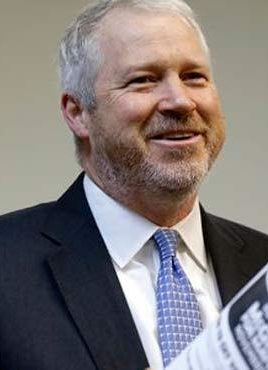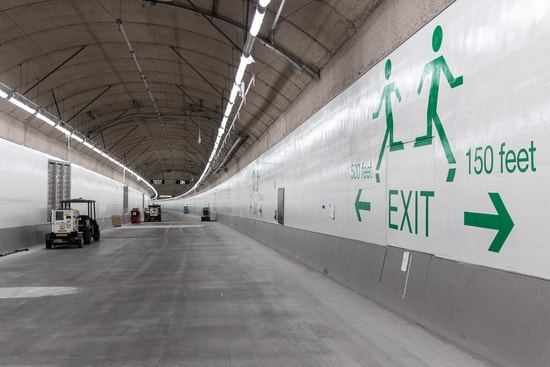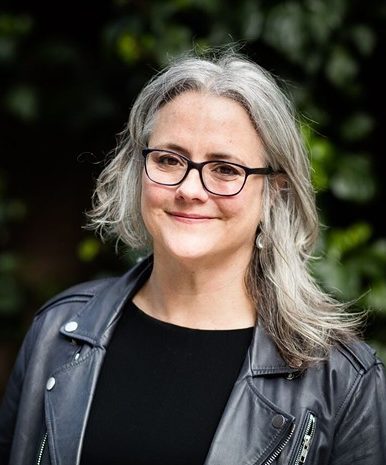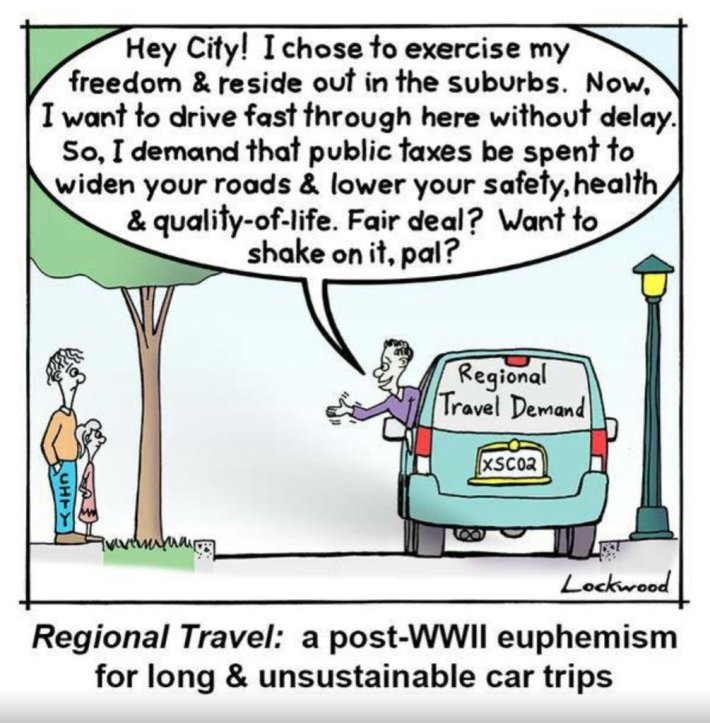Demand “Safe Streets for Everyone” at the National Bike Summit, hosted by the League of American Bicyclists March 15-17. Meet advocates from across the U.S. who are reshaping their communities and make your voice heard on Capitol Hill. Explore the summit here.
Perhaps it's just tunnel vision?
As lawmakers in New York City figure out what to do with their crumbling Brooklyn-Queens Expressway, many are citing Seattle's experience with tearing down its decrepit Alaskan Way viaduct and transforming it into a tunnel — but using Seattle as a model is not a good idea.
In fact, the $3.3-billion debacle was a disaster for the Emerald City's most-cherished progressive goals.
Plagued by cost overruns and construction delays from the start, Seattle's tunnel took more than a decade to negotiate and eight years to build, held back the region's larger transportation goals, hampered its climate change impact, endangered pedestrians, and worse.
No wonder former Mayor Mike McGinn tweeted directly at New York City Council Speaker Corey Johnson, who is considering several plans for renovating the crumbling expressway, which handles 150,000 cars and 25,000 trucks per day. One of Johnson's proposals is an $11-billion tunnel — a Gotham version of Boston's "Big Dig."
Dear NYC,
— Mike McGinn (@mayormcginn) February 24, 2020
Spend $11 billion to get ready for climate change, not $11 billion to make it worse.
P.s.,a tunnel won't cost just $11 billion. https://t.co/vkjl94oatW
New York still has time to avoid Seattle's great mistake. Any city deciding how to best rebuild (or not rebuild) aging highways would be wise to listen.
'A lot of money to do very, very little'
At the turn of the millennium, Seattle’s highway woes were virtually identical to the ones New York is grappling with today: a highly trafficked waterfront highway reaching the end of its life, and a network of moneyed, powerful interests battling over the best way to keep it open. But Seattle was forced to grapple with its problems much sooner than the Big Apple for a simple reason: mother nature came to call.
In 2001, an earthquake severely damaged the downtown segment of the elevated Alaskan Way viaduct, and state officials decided to spend $14.5 million in emergency repairs. But the structure remained unstable, and transportation leaders would need to work together to find a solution sooner rather than later if they wanted to prevent a collapse.
It could have been a golden opportunity for the forward-thinking Washington city to take a step back and recognize the way the highway was slowing them down. Instead, they waged a lengthy fight that ended with the region doubling down on auto-centricity — at great expense, and to dubious results.

“Even on the narrowest possible question — the question of how to move more cars — the tunnel wasn’t worth it,” McGinn said. “From a broader transportation standpoint, it’s even less worth it, because that money could have been spent on transit that would have moved more people. We spent a lot of money to do very, very little.”
A former activist with the Sierra Club, McGinn won the mayoralty in 2009 partially on the strength of his pro-highway removal platform. But by then, the city was eight years into a contentious public debate about the tunnel — and ultimately, McGinn was simply too late to prevent the plans from going forward.
In McGinn's eyes, one of the only redeeming features of the project is that it reduced the city's highway capacity — albeit not by much. The SR99 tunnel has only two lanes in each direction compared to the viaduct’s three — and thanks to induced demand’s counterpart, reduced demand, that slimmed-down road capacity has at least put fewer cars on Seattle’s streets.
Still, the reduction has been far from dramatic. In its final years, the viaduct averaged about 80,000 weekday trips; the tunnel, at one point, had about 75,000 weekday commuters. What did work to cut the car count was tolling the tunnel: when the city implemented a dynamic access fee in November ranging from $1.00 to $2.25, vehicle throughput fell by 30 percent, seemingly without displacing traffic onto city streets. Advocates argue that, faced with the choice between a toll and a traffic jam, drivers simply opted for other modes — just as they did in the brief period when both the viaduct and the tunnel were closed in 2009, and 90,000 vehicles disappeared from Seattle streets overnight.
Both events suggest that if Seattle's only goal in the tunnel project was to keep the city moving, they could have easily gotten by without a highway at all.

'A testament to stupidity and a relic of regret'
Of course, proponents of highway burials claim that the real point of a tunnel isn't just to move cars. It's to move cars underground, while still maintaining the benefits of the human-scaled, business-and-bike-lane-rich neighborhood you can build on top of the buried highway.
But those benefits haven't materialized in Seattle in the year since the Highway 99 tunnel opened. Burying the tunnel didn’t even make a dent in the city’s pedestrian fatality rates: those hovered between 15 and 20 deaths per year during the course of the tunnel’s construction, and stayed firmly in that range in 2019.
When it comes to the promised impact on Seattle business community, the buried highway was also a bust. Unlike the "cut-and-cover" tunnel that's being proposed for the BQE, the SR99 tunnel never promised to open up new downtown real estate: it was was dug beneath existing buildings, and the land beneath the former viaduct was already developed. Meanwhile, the freight sector’s fears that losing the highway would hurt local industrial interests were overblown: only about four percent of tunnel traffic comes from the shipping industry, a volume local advocates argue could have easily been absorbed by downtown routes.
And of course, the tunnel did nothing for city’s ambitious goals to reduce transportation-related carbon emissions: they actually rose 1.4 percent since 2012. And the environmental opportunity costs of the project were huge — and advocates are still mourning what could have been if the bypass had never been built and its budget had been reassigned to greener initiatives.

“We could have used that money to build a comprehensive network of bike lanes all over town that would have certainly saved lives,” activist and urban planner Cary Moon said. “We could have built tons of bus rapid transit, and affordable housing in job centers so people didn’t have drive so much. We could have done all of these things, and probably a lot quicker than it took to build the tunnel. But instead, we spent $4 billion to reinforce the highway industrial complex, which is our single biggest contributor to climate change as a region."
"It is a giant testament to stupidity and a relic of regret,” she continues.
Who are highways for?
So who is the SR99 tunnel benefitting, if not city commuters, Seattle business owners, or the planet itself? Advocates think there’s a depressingly familiar answer: wealthy, car-dependent suburbanites and the developers who build for them.
“There’s a fight in Seattle right now between younger progressives who want to fundamentally rethink our transportation network because of its role in reducing climate change, and older, wealthy, white environmentalists who live outside downtown.” Moon said. “The tunnel exemplified that conflict. [Wealthy environmentalists] care about climate change, yes, but they also like having a mountain home, they like having access to ski slopes, and they can’t imagine not driving anywhere because those are their habits. And for them, the tunnel was great: they were like, ‘we can have the nice beautiful home way out on the edge, and the convenience of a bypass highway!’”

It’s a conflict that may sound familiar to residents of New York City, and any resident of a wealthy and ostensibly climate-conscious city that still won’t reckon seriously with its auto-dependency — even when its highways are about to die a natural death.
But other communities have seen the natural demise of their mega-roads as a golden opportunity: San Francisco, Rochester and Milwaukee all famously chose to rip the highways down and invest in other modes.
"The highway removals I've worked with have always been good for development, and they've never caused the traffic carmageddon that everyone expects," said transportation engineer Norm Marshall, who has advocated for highway removal in dozens of prominent projects, including SR99.
"I did feel like they could have saved a lot of money by not building that thing at all."
The tunnel’s lessons for the rest of us
If they want to find a better way to address the BQE's impending demise, transportation leaders in the Big Apple need to find a better model for what to do about their crumbling highway than the Seattle project — and fast.
And they're not the only ones. As a nation, nearly all our highways are nearing the end of their life cycles, as the massive network of roads built with 90 percent federal funding from the 1956 the Federal-Aid Highway Act age into obsolescence all at once.
Advocates argue we’re on the brink of nothing short of a national mobility crisis — and that we’re facing a historic choice between propping up our national experiment with auto-centricity, and admitting it was all a massive failure and seizing the chance to better. Cities that choose the first are signing up to continue an approach that kills road users, the planet, and our national budget; cities that choose the second are signing up for a path back to sustainable transportation that will be politically challenging, but would be better for America in virtually every other way.
Seattle’s short-sighted choice, unfortunately, was to keep the cars moving. But New York — and every community in America that’s grappling with an aging highway — can pick something better. But first, we must have the courage to see past the hype and take a hard look at what really happened in Washington.






